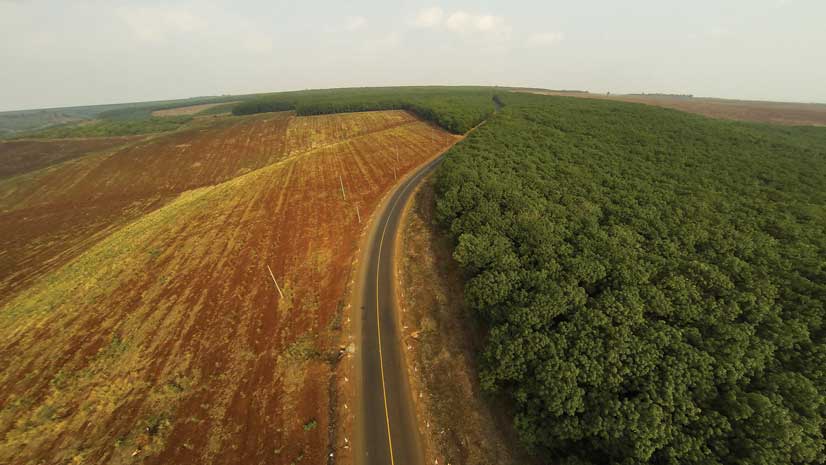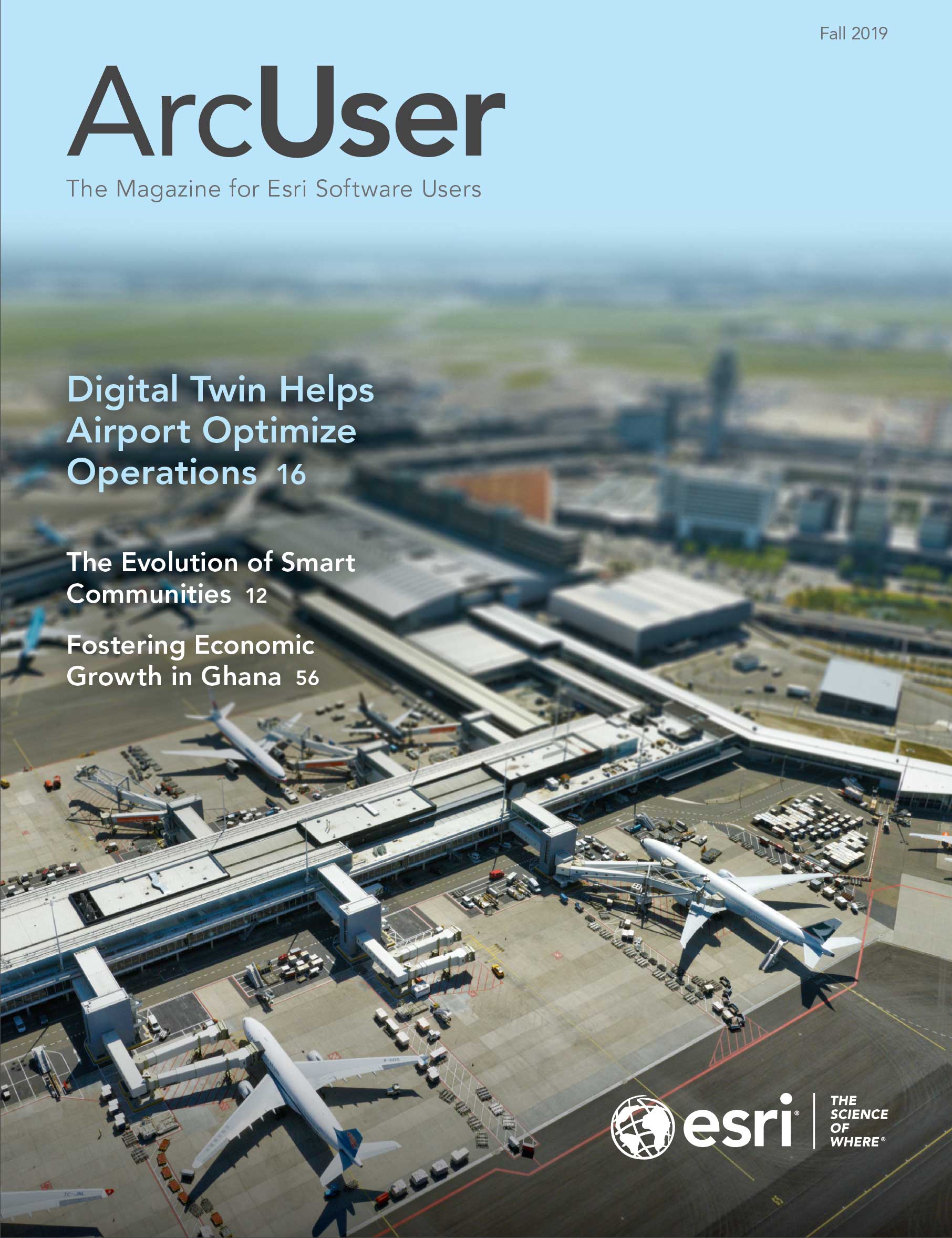An economic development nonprofit organization that works on projects in countries throughout the world uses ArcGIS to better understand and optimize agricultural value chains.
ACDI/VOCA was founded to achieve better lives for people and communities by increasing economic prosperity and social inclusion. It pioneered the value chain approach to international development. [The value chain approach concentrates on the value adding activities required to bring a product or service through the different phases of production.]
ACDI/VOCA has worked in 148 developing nations, completing thousands of projects that have fostered broad-based economic growth. The organization focuses its efforts in five primary areas: catalyzing investment, climate-smart agriculture, empowerment and resilience, institutional strengthening, and market systems.
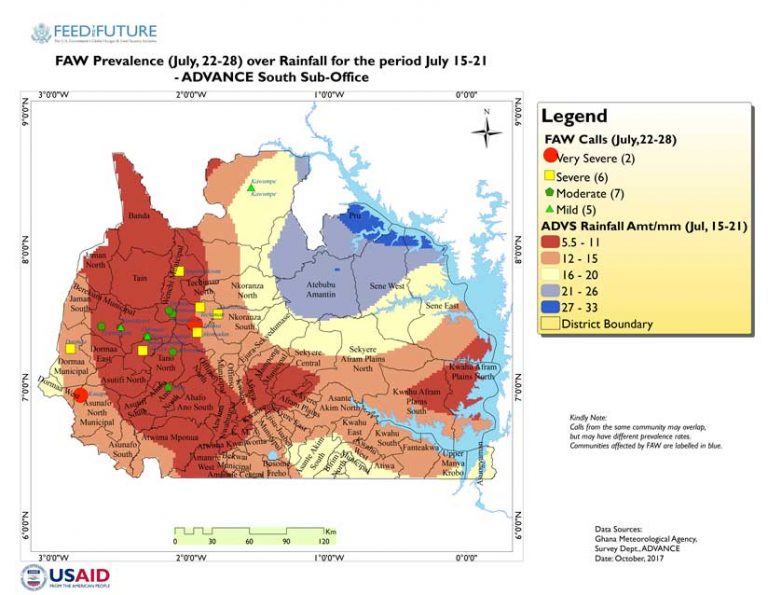
The Feed the Future program in Ghana is one of more than 100 projects ACDI/VOCA is involved in that link farmers, small businesses, rural communities, and vulnerable groups to markets. Feed the Future is the US government’s global hunger and food security program. It supports the Agricultural Development and Value Chain Enhancement Project II (ADVANCE II), which is funded by the United States Agency for International Development (USAID). It was originally implemented in Ghana in 2014 by ACDI/VOCA and three consortium partners: Technoserve, ACDEP, and PAB Consult.
Ghana’s Feed the Future’s goal is improving the livelihoods of smallholder farmers in the Republic of Ghana by boosting the productivity of the country’s rice, maize, and soybean value chains. Located in West Africa, Ghana’s agricultural industry accounts for about 20 percent of its gross domestic product and employs more than half of its workforce. The most agriculture production in Ghana is conducted on smallholder farms that average 1.2 hectares of arable land. Primary crops include mango, citrus, cashew, and cocoa as well as rice, maize, and soybeans.
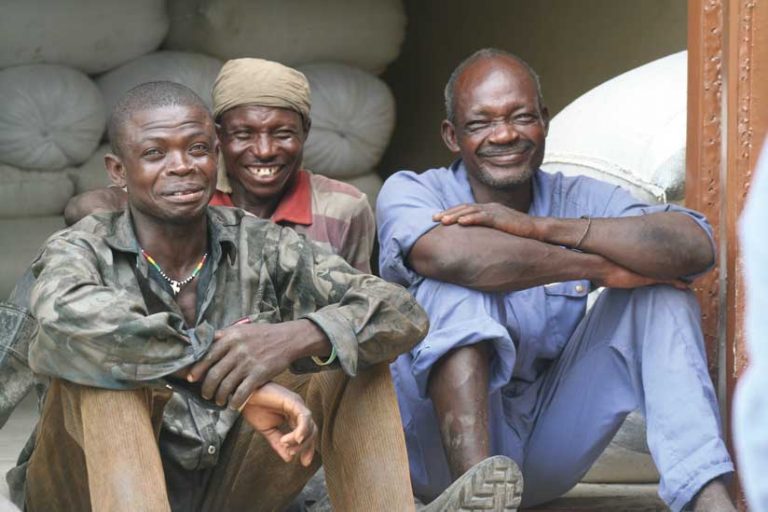
“For ADVANCE II in Ghana, we implemented local agricultural value chains, which refer to all of the farm-to-table processes and services required for growing, processing, managing, and distributing farm products,” said Jennifer Himmelstein, director of corporate analysis and technical assurance for ACDI/VOCA. “Our work involves the examination of the impediments, gaps, and barriers along the value chain and then determining and implementing ways to streamline it to benefit all involved.”
To make the entire process more economically viable, the organization provides agricultural materials and advice to farmers and gives business equipment and specialized training to farm agents, managers, and record keepers.
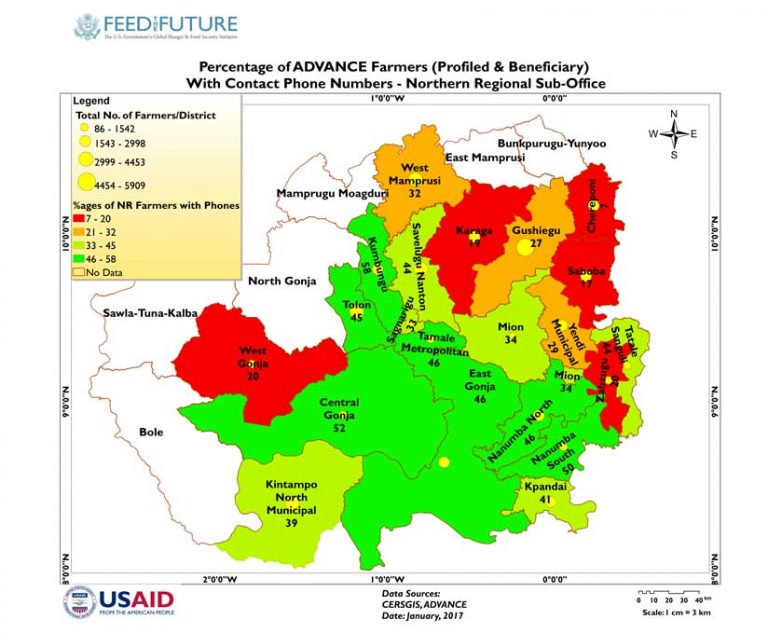
“We use ArcGIS in a number of ways. For example, we mapped the locations of the various facilities that are included in the value chain, including farms, warehouses, weather stations, tractor service providers, produce aggregators, processors, and so on; as well as developing a demographic profile of those working at the facilities. This allows us to examine trends and patterns in the agricultural value chain,” said Himmelstein.
ACDI/VOCA identifies any bottlenecks at a facility and explores ways that they can be resolved. For men or women working at a facility, the organization determines if they need access to specific services to help them with this work. Determining who is involved in the local agricultural value chain process, how they are involved, and the benefits that they are receiving from their involvement is important because one of the organization’s overriding goals is the promotion of equality and women’s empowerment.
“The results from our various analyses are available in dashboards for easy visualization, comprehension, and decision-making,” said Himmelstein. “Maps and other strategic data are provided to USAID as part of the required reporting process of the ADVANCE II project.”
It’s commonly assumed that the amount of rainfall is critical to the success or failure of smallholder farmers in any year. Rainfall is particularly important, given the increasingly unpredictable weather patterns throughout the world due to climate change. To examine the correlation between the amount of annual rainfall and its effects on a farmer’s harvest, ACDI/VOCA implemented a study to determine whether its introduction of improved farming methods mitigated the reliance on anticipated rainfall to sustain the harvest.
“The challenge is collecting accurate rainfall data for the areas in which we are working,” said Himmelstein. “There are government weather stations that collect this data, but they are too widely dispersed to provide rainfall measurements to the individual farm level in the areas where we are implementing ADVANCE II practices to increase agricultural yields.”
To deal with these data limitations, ACDI/VOCA uses the IDW tool in the ArcGIS Spatial Analyst toolset to perform inverse distance weighted interpolation on rain data provided by the Ghana Meteorological Agency in vector format. After processing, the resultant raster file allows monthly average rainfall to be determined for study areas. This data showed that the rainfall pattern throughout Ghana has changed over the years. It is not as predictable as it previously was.
Using rainfall as the constant factor, ACDI/VOCA compared agricultural yields from farms implementing ADVANCE II enhanced farming methods with nearby farms not using those methods, ACDI/VOCA concluded that yields for ADVANCE II farmers were greater. ADVANCE II methods, such as using better quality seed, improving water management, and properly applying fertilizers and pesticides, determined the yield for farms—not the amount of rain farms received.
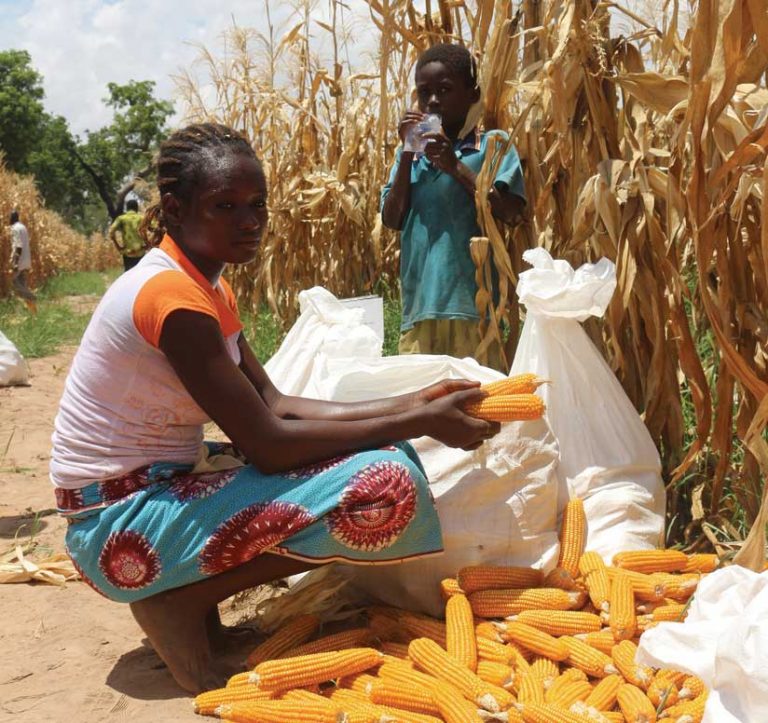
“ACDI/VOCA has been working in Ghana for more than six years on the ADVANCE II project,” said Himmelstein. “By encouraging improved farming methods such as minimum tillage, the farmers are enhancing carbon sequestration in their soil, thus mitigating climate change.”
Another positive effect on ADVANCE II farms was that conservation practices are providing resistance to crop pests and disease, which contributed to increased income and food security throughout the country. So far, ACDI/VOCA has worked with more than 110,000 farmers and others involved in agribusiness in Ghana. The findings from the organization’s work will allow it to scale up its methodology and further expand the agricultural value chain enhancements in Ghana.
“In the future, I would like to use GIS to do more predictive modeling to help us develop our intervention strategies more quickly. I also think it could be very useful for analyzing logistics in our development of local agricultural value chains,” concluded Himmelstein.

